- Home
- John Berger
And Our Faces, My Heart, Brief as Photos
And Our Faces, My Heart, Brief as Photos Read online
I would like to express my solidarity with the Transnational Institute, Amsterdam, and the Institute of Policy Studies, Washington, D.C., and to thank them for their support and encouragement during all the years when this book was being conceived and written. I would also like to thank New Society, London, and The Village Voice, New York, for publishing a number of articles in which I worked out some of the ideas envisaged for this book. Finally I would like to thank Anthony Barnett for his critical help.
Contents
Part One: Is about Time
1/Once
Part Two: Is about Space
2/Here
Source Notes
A Note on the Author
By the Same Author
Also Available by John Berger
Part One: Is about Time
1/Once
When I open my wallet
to show my papers
pay money
or check the time of a train
I look at your face.
The flower’s pollen
is older than the mountains
Aravis is young
as mountains go.
The flower’s ovules
will be seeding still
when Aravis then aged
is no more than a hill.
The flower in the heart’s
wallet, the force
of what lives us
outliving the mountain.
And our faces, my heart, brief as photos.
ONCE UPON A TIME
The first was a hare. At two thousand meters on a mountain frontier. Where are you going? asked the French customs officer. To Italy, I said. Why didn’t you stop? he asked. I thought you beckoned me on, I replied. And at that moment everything was forgotten because a hare ran across the road, ten yards away from us. It was a lean hare with tufts on the tips of its ears of brown smoke. And although it was running slowly, it ran for its life. Sometimes that can happen.
A few moments later the hare ran back across the road, this time pursued by half a dozen men, who nevertheless were running much slower than it, and who had the air of having just jumped up from a meal. The hare ran upwards towards the crags and the first patch of snow. The customs man was shouting instructions about how to catch the hare—and I drove on, over the frontier.
The next animal was a kitten. An entirely white kitten. It belonged to a kitchen with an uneven floor, an open chimney, a wooden table that was somewhat broken, and rough whitewashed walls. Against the walls the kitten was almost invisible except for its dark eyes. When it turned its head away, it disappeared into the wall. When it jumped about over the floor or onto the table, it was like a creature that had escaped from the walls. The way that it appeared and disappeared gave it the mysterious intimacy of a household god. I have always thought that household gods were animals. Sometimes visible and sometimes invisible, but always present. As I sat at the table, the cat jumped onto my legs. It had sharp white teeth as white as its fur. And a pink tongue. Like all kittens it played continually: with its own tail, on the backs of the chairs, with scraps on the floor. When it wanted to rest, it looked for something soft to lie on. And watching it, fascinated, throughout a week, I observed that, whenever it could, it chose something white—a towel, a white pullover, some washing. Then, with eyes shut and mouth closed, curled up, it became invisible, surrounded by the white walls.
A village in the hills, not far from Pistoia. The village cemetery was rectangular with high walls round it and wrought-iron gates. At night most of the gravestones were lit up, each with its individual candlelight. But the candles were electric, and they were switched on with the street lamps. They burnt all night and there were many more of them than street lamps in the village. Just past the cemetery, the road turned sharply and, at the bend, a dust road led off to a farm. On this dust road I saw one of the grey ducks.
On several occasions I had seen the whole family. They often installed themselves on the grass bank under the bushes opposite the cemetery. The first time I saw the cemetery lights at dusk, I noticed the ducks waddling around in the night-green grass. A duck, a drake and about six ducklings.
This time it was only the drake, stationary, in the middle of the road, pawing the dust, with his head down. It took a minute or so before I realized that he was on the back of the duck, who was entirely invisible. Once or twice she spread her wings out and they appeared under his feet, before she settled down again, into the dust. His thrusts became faster. Finally, having reached his climax, the drake fell off the duck and she became visible. He fell off her sideways onto the road. He fell as if he had been shot, lying on his side. A small bird-shaped grey bag, inert in the dust, as if full of lead. She looked around, got to her feet, beat her wings, stretched her neck and wandered off, confident that the ducklings would now find her.
One night, walking in the countryside near Prijedor in Bosnia, I found a solitary glow-worm, with its amber-green light, under some grasses. I picked it up and carried it on my finger where it glowed like an electric opal on a ring. When I approached the house the other lights competed too strongly, and it put its own out.
In the bedroom I placed it on some leaves on top of the chest of drawers. When I put the light out, the glow-worm glowed again. At the back of the dressing table was a mirror which faced the window. If I lay on my side I saw a star reflected in the mirror and the glow-worm beneath on the chest of drawers. The only difference between them was that the light of the glow-worm was slightly greener, more glacial, further away.
ONCE IN A STORY
We are both storytellers. Lying on our backs, we look up at the night sky. This is where stories began, under the aegis of that multitude of stars which at night filch certitudes and sometimes return them as faith. Those who first invented and then named the constellations were storytellers. Tracing an imaginary line between a cluster of stars gave them an image and an identity. The stars threaded on that line were like events threaded on a narrative. Imagining the constellations did not of course change the stars, nor did it change the black emptiness that surrounds them. What it changed was the way people read the night sky.
The problem of time is like the darkness of the sky. Every event is inscribed in its own time. Events may cluster and their times overlap, but the time in common between events does not extend as law beyond the clustering.
A famine is a tragic cluster of events. To which the Great Plough is indifferent, existing as it does in another time.
The life span of a hare on one hand and a tortoise on the other are prescribed in their cells. The likely duration of a life is a dimension of its organic structure. There is no way of comparing the time of the hare with that of the tortoise except by using an abstraction which has nothing to do with either. Man introduced this abstraction and organized a race to discover which of the two would reach the finishing post first.
Man is unique insofar as he constitutes two events. The event of his biological organism—and, in this, he is like the tortoise and hare—and the event of his consciousness. Thus in man two times coexist, corresponding with these two events. The time during which he is conceived, grows, matures, ages, dies. And the time of his consciousness.
The first time understands itself. Which is why animals have no philosophical problems. The second time has been understood in different ways in different periods. It is indeed the first task of any culture to propose an understanding of the time of consciousness, of the relations of past to future realized as such.
The explanation offered by contemporary European culture—which, during the last two centuries, has increasingly marginalized other explanations—is that which constructs a uniform,
abstract, unilinear law of time applying to all events, and according to which all “times” can be compared and regulated. This law maintains that the Great Plough and the famine belong to the same calculus, a calculus which is indifferent to both. It also maintains that human consciousness is an event, set in time, like any other. Thus, an explanation whose task is to “explain” the time of consciousness, treats that consciousness as if it were as passive as a geological stratum. If modern man has often become a victim of his own positivism, the process starts here with the denial or abolition of the time created by the event of consciousness.
In reality we are always between two times: that of the body and that of consciousness. Hence the distinction made in all other cultures between body and soul. The soul is first, and above all, the locus of another time.
What astounds cannot be
the remnant of what
has been.
Tomorrow still blind
advances slowly.
Sight and light
race towards each other,
and from their embrace
is born the day,
eyes open
tall as a foal.
Murmuring river
clasps the mist
for a moment more.
The peaks are signing on
the sky.
Stop and hear
the milking machines
designed to suck like calves.
In the first heat
the forested hills calculate
their steepness.
The lorry driver is taking the road
to the pass which leads
surprisingly
with its own familiarity
to another homeland.
Soon the grass will be
warmer
than the cows’ horns.
The astounding comes
towards us
outrider of death and birth.
When in 1872 Marx wrote, “A spectre is haunting Europe—the spectre of Communism. All the Powers of old Europe have entered into a holy alliance to exorcise this spectre: Pope and Czar, Metternich and Guizot, French Radicals and German police spies,” he was making a double announcement. The rich feared revolution, as they still fear it today. The second announcement was of a different order. It was a reminder that every modern society is aware of its own ephemerality.
History since the French Revolution has changed its role. Once it was the guardian of the past: now it has become the midwife of the future. It no longer speaks of the changeless but, rather, of the laws of change which spare nothing. Everywhere history is seen as progress, sometimes sociopolitical progress, and continually technological progress. History rightly offers hope to the desperate and the exploited struggling for justice. (In the Third World, as the century approaches its end, this hope is increasingly joining forces with religious faith.) In the world of the relatively rich, history’s unique and insatiable demand has become that of obsolescence.
Thus people live a new temporal dimension. Social life which once offered an example of relative permanence is now the guarantor of impermanence. Given the actual condition of the world, this offers a promise. But equally, it means that people find themselves more alone than they used to be, before the enigma of the two times of their lives. No social value any longer underwrites the time of consciousness. Or, to be more exact, no accepted social value can do so. In certain circumstances—I think of Che Guevara—revolutionary consciousness performs this role in a new way.
Often when I shut my eyes, faces appear before me. What is remarkable about them is their definition. Each face has the sharpness of an engraving.
I related this experience once to a friend. He said he was sure it must be connected with the fact that during my lifetime—I was in my thirties when it first happened to me—I had looked at and concentrated upon so many thousands of paintings. This seems very likely. But it sidesteps the real issue, because the principal function of painting, until recently, was to depict, to make as if continually present, what soon was to be absent.
None of the faces is ever familiar to me. Usually they are fairly still, but they are not static images; they are alive. They are like the face of a person thinking. They are clearly not aware of my watching them. Yet I am able to make them look at me. “Make them” is perhaps too strong a term: it requires no great effort on my part. Instead of simply watching a group of them, I have to concentrate my attention on a particular one and then she or he, as frequently happens in daily life, looks up and returns my gaze. Their optical distance away from me is normally about three or four meters, but when one returns my gaze, her or his expression is such, its intensity is such, that our faces might be only a few centimeters apart.
The expression, although modified by the face’s character and age, is always similar. Its intensity is not a question of emotion, or of pleasure or pain. The face looks straight at me and without words, by the expression of the eyes alone, it affirms the reality of its existence. As if my gaze had called out a name, and the face, by returning it, was answering, “Present!”
I am always aware that if I open my eyes, the faces will immediately disappear, become absent. What is less clear to me is what happens when I shut my eyes. Is it I who cross the barrier that normally excludes them, or is it they who cross it? They belong to the past. The certainty with which I know this has nothing to do with their clothes or the “style” of their faces. They belong to the past because they are the dead, and I know this by the way they look at me. They look at me with something approaching recognition.
I was in that state between waking and sleeping. From there you can wander towards either of the two. You can go away in a dream or you can open your eyes, be aware of your body, the room, the crows cawing in the snow outside the window. What distinguishes this state from that of full wakefulness is that there is no distance between word and meaning. It is the place of original naming. And from there I saw myself before birth, more than nine months before birth. The life-to-come in the womb was further away perhaps than death is now.
To be conceived was a call to come forward, to assume a form. Yet this prior existence, although formless, was neither vague nor neuter. (I say neuter rather than neutral for it had a sexual charge, that of an undifferentiated sexuality.) I was placeless and so innocent. I was unparticular and so invulnerable. But I was also happy. The only image of this happiness, the only contraband I could smuggle back across the frontier of full wakefulness, was not an image of myself—for that surely did not exist on the other side of the frontier—but an image of something akin to myself: the flat surface of a rock, a stone over which a skin of water flowed continuously.
We are both storytellers. Lying on our backs, we look up at the night sky.
Where is Tony Goodwin now? His death proclaims that he can never again be present anywhere: that he has ceased to exist. Physically this is true. In the orchard they were burning leaves two weeks ago. I walk through the ashes when I go down to the village. Ashes are ashes. Tony’s life now belongs, historically, to the past. Physically his body, simplified by burning to the element of carbon, re-enters the physical process of the world. Carbon is the prerequisite for any form of life, the source of the organic. I tell myself these things not in order to concoct a specious alchemy of immortality, but in order to remind myself that it is my view of time which is being remorselessly cross-examined by death. There is no point in using death to simplify ourselves. Tony is no longer within the nexus of time as lived by those who, until recently, were his contemporaries. He is on the circumference of that nexus (the circumference not of a circle but of a sphere) as are diamonds and amoebas. Yet he is also within that nexus as are all the dead. They are there as all-that-the-living-are-not. The dead are the imagination of the living. And for the dead, unlike the living, the circumference of the sphere is neither frontier nor barrier.
The pulse of the dead
as interminably
consta
nt as the silence
which pockets the thrush.
The eyes of the dead
inscribed on our palms
as we walk on this earth
which pockets the thrush.
The photograph which lies on the table in front of me has become incriminating. Better not to print it—even thousands of miles away from Turkey. It shows six men standing in a line, in a wooden-panelled room somewhere on the outskirts of Ankara. The photo was taken after a political committee meeting, two years ago. Five of the men are workers. The eldest is in his fifties, the youngest in his late twenties.
Each one is as unmistakably himself as he would be in the eyes of his own mother. One is bald, one has curly hair, two are thin and wiry, one is broad-shouldered and well-covered. All are wearing skimpy, cheap trousers and jackets. These clothes bear the same relation to the suits of the bourgeois as the capital’s shantytowns, where the five live, bear to the villas with French furniture where the bosses and merchants live.
Yet, with their clothes taken off, in a public bath, a police or army officer would have little difficulty in identifying them as workers. Even if the five half-closed their eyes so as to mask their expressions, so as to pretend to a commendable indifference, their social class would still be evident. Even if with the magical aid of certain djinn they assumed, with consummate art, the typical facial expression of a speculator’s mistress—an expression of sugared charm, sugared indifference and greed—the way they hold their heads would still betray them.
It is as if a court, at the moments of their conception, had sentenced them all to have their heads severed from their necks at the age of fifteen. When the time came, they resisted, as all workers resist, and their heads remained on their shoulders. But the tension and obstinacy of that resistance has remained, and still remains, visible—there between the nape of the neck and the shoulder blades. Most workers in the world carry the same physical stigma: a sign of how the labor power of their bodies has been wrenched away from their heads, where their thoughts and imaginings continue, but deprived now of the possession of their own days and working energy.

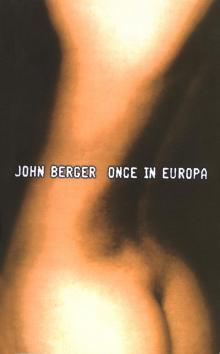 Once in Europa
Once in Europa To the Wedding
To the Wedding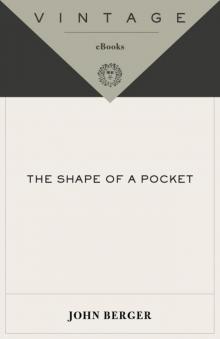 The Shape of a Pocket
The Shape of a Pocket Here Is Where We Meet
Here Is Where We Meet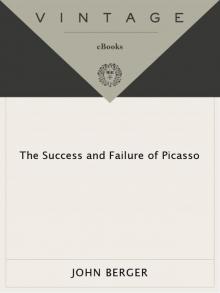 The Success and Failure of Picasso
The Success and Failure of Picasso G.
G.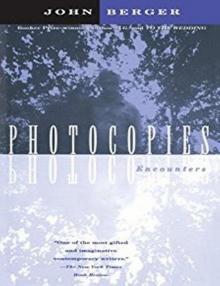 Photocopies: Encounters
Photocopies: Encounters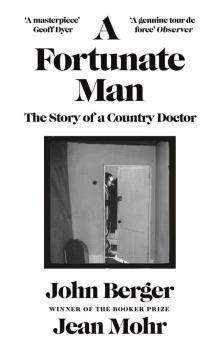 A Fortunate Man: The Story of a Country Doctor
A Fortunate Man: The Story of a Country Doctor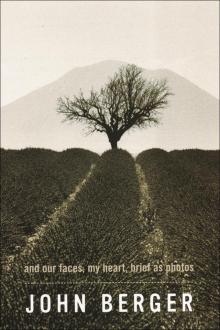 And Our Faces, My Heart, Brief as Photos
And Our Faces, My Heart, Brief as Photos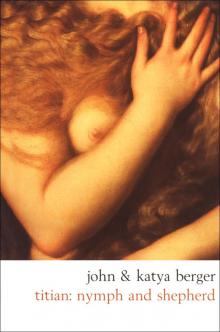 Titian
Titian A Fortunate Man
A Fortunate Man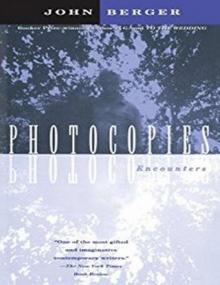 Photocopies: Encounters (Vintage International)
Photocopies: Encounters (Vintage International) Selected Essays of John Berger
Selected Essays of John Berger